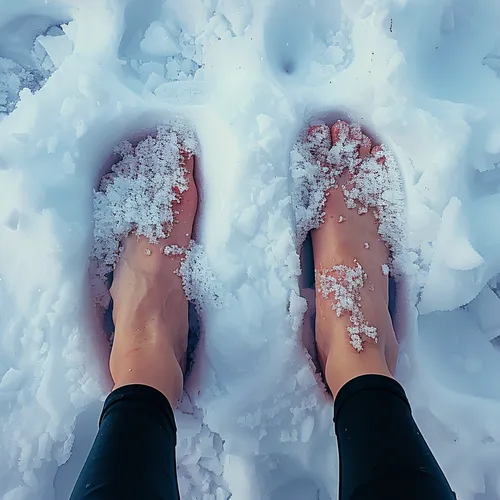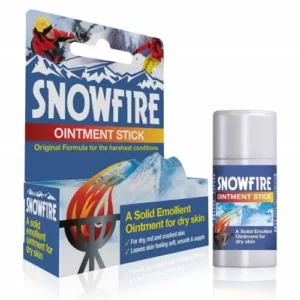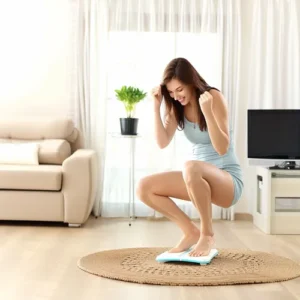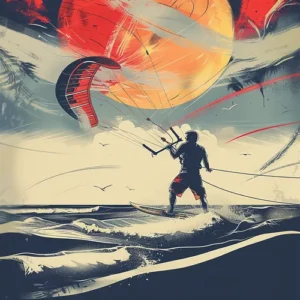Chilblains are a painful condition caused by poor circulation in the hands, feet, and other extremities. They are most commonly seen in colder temperatures and can range from mild to severe cases. The condition is caused when the blood vessels in the skin constrict, leading to redness and swelling in the affected area. If left untreated, chilblains can cause permanent damage and scarring.
Symptoms of Chilblains
There aren’t many symptoms of chilblains although fortunately if you have them, it isn’t too difficult to recognise them. Chilblain symptoms include a prickling or burning sensation, swelling, itching, and red or purple skin. In severe cases, blisters may form or the skin may ulcerate.
- Burning sensation. The worst symptom that you will experience if you have chilblains is a burning sensation. This sensation can cause your skin to be itchy and irritable, and may worsen when you go back indoors.
- Blisters.While blisters only occur in very severe cases of chilblains, when you start scratching at the irritable skin you risk breaking it, and an infection could develop.
Given that chilblains are caused by very cold temperatures, if you’ve been out playing in the snow or have been using machinery outside while it’s cold, they will be noticeable within a few hours. If any of these symptoms occur, it is important to seek medical advice as soon as possible.
What Causes Chilblains?
Reiterating what we’ve discussed so far, the most common reason for chilblains happening is very cold temperatures, however, there are other causes. While it depends on your general health, if you have any of conditions from the detailed list below, you will be more at risk of chilblains than others.
- Lupus
- Eating unhealthily
- Being underweight
- Living in a damp and cold environment
- Poor blood circulation
These things will all contribute to your health in different ways although in this case, they can increase your chance of chilblains and even make their occurrences worse than they would otherwise be.
How to Treat Chilblains
Fortunately, chilblains can be left alone without any medical treatment and they will improve over a few weeks on their own. Fortunately, there are several ways to prevent chilblains. The first is to keep the individual warm. This can be done by wearing warm clothing and using heating pads or hot water bottles. Gloves, socks, and other protective gear should also be worn in cold weather.
In addition, it is important to keep the skin hydrated. Most people will choose to use a moisturiser on the affected areas a few times a day to ease the irritability, and there are some over-the-counter products available which can also help. (Our ever popular Snowfire ointment stick is one of the most widely used winter remedies for Chilblains.) Avoiding tight clothing can also help. Finally, regular exercise is important to improve blood circulation and keep the body warm.
Now, when chilblains have been a frequent problem with your skin and you find yourself struggling to deal with them, it’s time to seek medical attention. Severe cases like this will get worse over time and when you contact your GP, they will likely provide you with some form of medication to fight off the chilblains. Pain relievers such as ibuprofen or acetaminophen can help reduce the pain and swelling. Non-steroidal anti-inflammatory drugs (NSAIDs) may also be prescribed to reduce inflammation.
Can You Prevent Chilblains?
Chilblains aren’t something that can be easily prevented, especially if there is an underlying health condition which has been causing it. However, there are a few things which have proven to be helpful for reducing the chances of chilblains becoming a problem.
- Staying indoors whenever it is extremely cold outside.
- Taking care of your feet (e.g. keeping them clean, making sure that they are never too cold, etc).
- Exercising regularly to ensure proper blood circulation.
Now, when your body gets too cold your blood vessels get tighter, thus, restricting your blood flow. This is one of the main things that contribute to chilblains and to keep your blood vessels at a healthy width (which will ensure healthy blood circulation), there are a few steps that you can take.
- Avoid smoking at all costs (smoking has proven to lead to blood vessels tightening which not only leads to chilblains but can also result in heart problems).
- Circulation is important, especially in your feet, so avoid wearing any shoes that are too small and too tight for you.
- Turn up your thermometer during the Winter so that you don’t suffer in the cold temperatures.
By taking everything that we have listed above into consideration you are able to avoid chilblains, keep your skin undamaged, and if you ever have the unfortunate experience of chilblains, you’ll know how to deal with them.
Overall, chilblains can be a painful and uncomfortable condition, but there are steps you can take to help reduce your risk. Keeping warm, hydrated, and exercising regularly can help to prevent chilblains from occurring. If symptoms do occur, it is important to seek medical advice as soon as possible. With the right treatment, chilblains can be managed effectively.
Beat Chilblains with Snowfire Ointment Stick
Winter can be brutal on your skin, especially if you suffer from chilblains. Those painful, itchy blisters on your fingers, toes, ears or nose are no fun at all. But don’t worry, you’re not alone – chilblains affect lots of people when the weather turns cold. And there’s an easy solution to get relief and heal faster: Snowfire Chilblains & Chapped Skin Ointment Stick.
This handy little stick is loaded with ingredients that soothe and repair damaged winter skin. The star of the show is an emollient blend that drenches your skin with much-needed moisture. We’re talking heavy-hitting humectants like paraffin and petrolatum that lock in hydration and create a protective barrier.
But Snowfire doesn’t stop there. It’s also infused with anti-inflammatory essential oils to take down swelling and redness. Can you say bye-bye to those angry, throbbing chilblain blisters? This ointment soothes that fiery itch and calms the storm.
Here’s where it gets really cool: the stick format. No more goopy creams or messy ointments to deal with. Just glide the Snowfire stick directly over those chilblains and any other dry, cracked areas. The solid ointment melts into your skin with just the warmth of your fingertips.
For example, let’s say your poor little toes are covered in chilblain blisters from walking around in the cold. After a warm foot soak, you can smooth that Snowfire ointment all over them like butter on toast. Ahh, instant relief from that maddening itch and sting.
Or maybe your hands took a beating from winter’s harsh winds and freezing temps. Just rub that magic Snowfire stick over any cracked knuckles or split fingertips. The emollients sink in to rehydrate while the occlusive ingredients protect against further moisture loss.
You can even slather some ointment on a bandaid or gauze pad before covering up stubborn chilblain spots. That concentrated moisture helps them heal much faster. No wonder this stuff is approved for safety and sold at tons of pharmacies!
The only potential downside? Snowfire’s essential oil blend has a pretty potent natural scent. But lots of folks dig it, and you can always use it before bedtime if the aroma’s too strong during the day.
At the end of the day, chilblains are the absolute worst part of winter. But Snowfire Chilblains & Chapped Skin Ointment Stick is here to be your saving grace. This multipurpose moisture bomb quickly calms fiery symptoms while preventing future damage. Don’t spend another day suffering – get your hands on this genius skin soother!
Photo “Feet In The Snow” by Anthony Cunningham for Zoom Health
Zoom Health is a leading UK supplier of Home Health Tests and Earplugs






